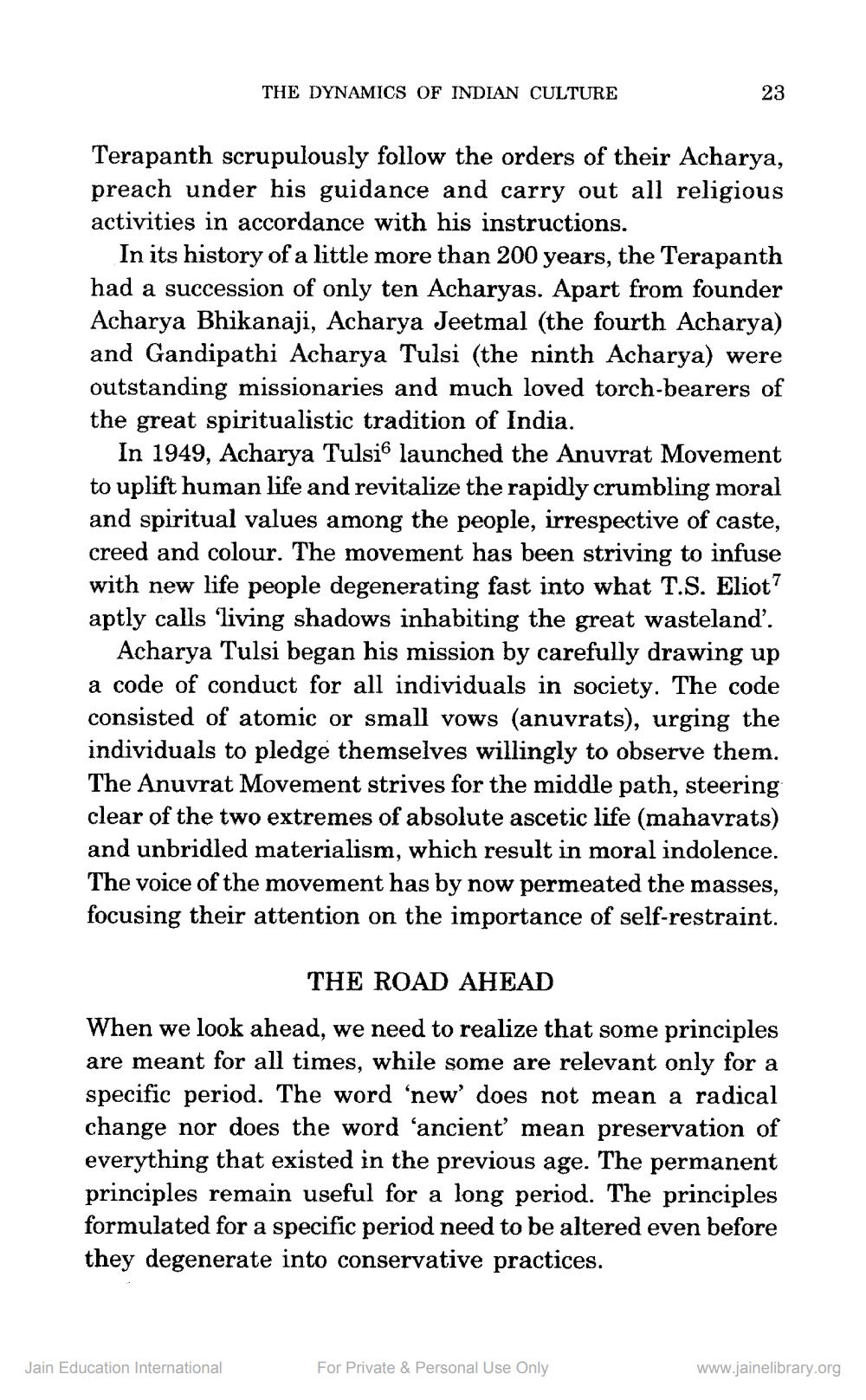________________
THE DYNAMICS OF INDIAN CULTURE
23
Terapanth scrupulously follow the orders of their Acharya, preach under his guidance and carry out all religious activities in accordance with his instructions.
In its history of a little more than 200 years, the Terapanth had a succession of only ten Acharyas. Apart from founder Acharya Bhikanaji, Acharya Jeetmal (the fourth Acharya) and Gandipathi Acharya Tulsi (the ninth Acharya) were outstanding missionaries and much loved torch-bearers of the great spiritualistic tradition of India.
In 1949, Acharya Tulsió launched the Anuvrat Movement to uplift human life and revitalize the rapidly crumbling moral and spiritual values among the people, irrespective of caste, creed and colour. The movement has been striving to infuse with new life people degenerating fast into what T.S. Eliot aptly calls 'living shadows inhabiting the great wasteland'.
Acharya Tulsi began his mission by carefully drawing up a code of conduct for all individuals in society. The code consisted of atomic or small vows (anuvrats), urging the individuals to pledge themselves willingly to observe them. The Anuvrat Movement strives for the middle path, steering clear of the two extremes of absolute ascetic life (mahavrats) and unbridled materialism, which result in moral indolence. The voice of the movement has by now permeated the masses, focusing their attention on the importance of self-restraint.
THE ROAD AHEAD When we look ahead, we need to realize that some principles are meant for all times, while some are relevant only for a specific period. The word 'new' does not mean a radical change nor does the word 'ancient mean preservation of everything that existed in the previous age. The permanent principles remain useful for a long period. The principles formulated for a specific period need to be altered even before they degenerate into conservative practices.
Jain Education International
For Private & Personal Use Only
www.jainelibrary.org




